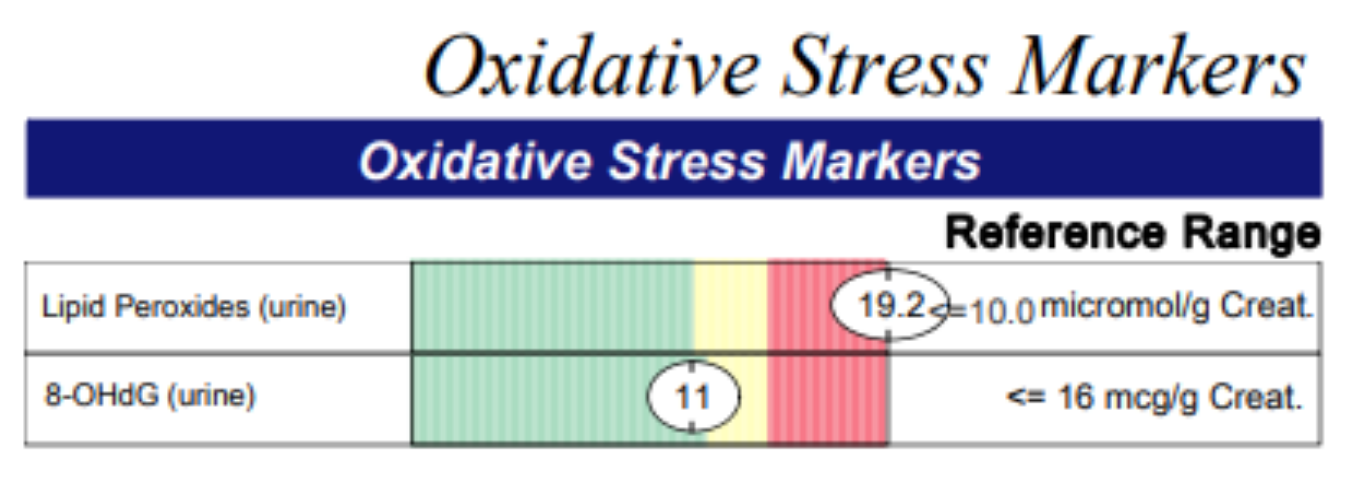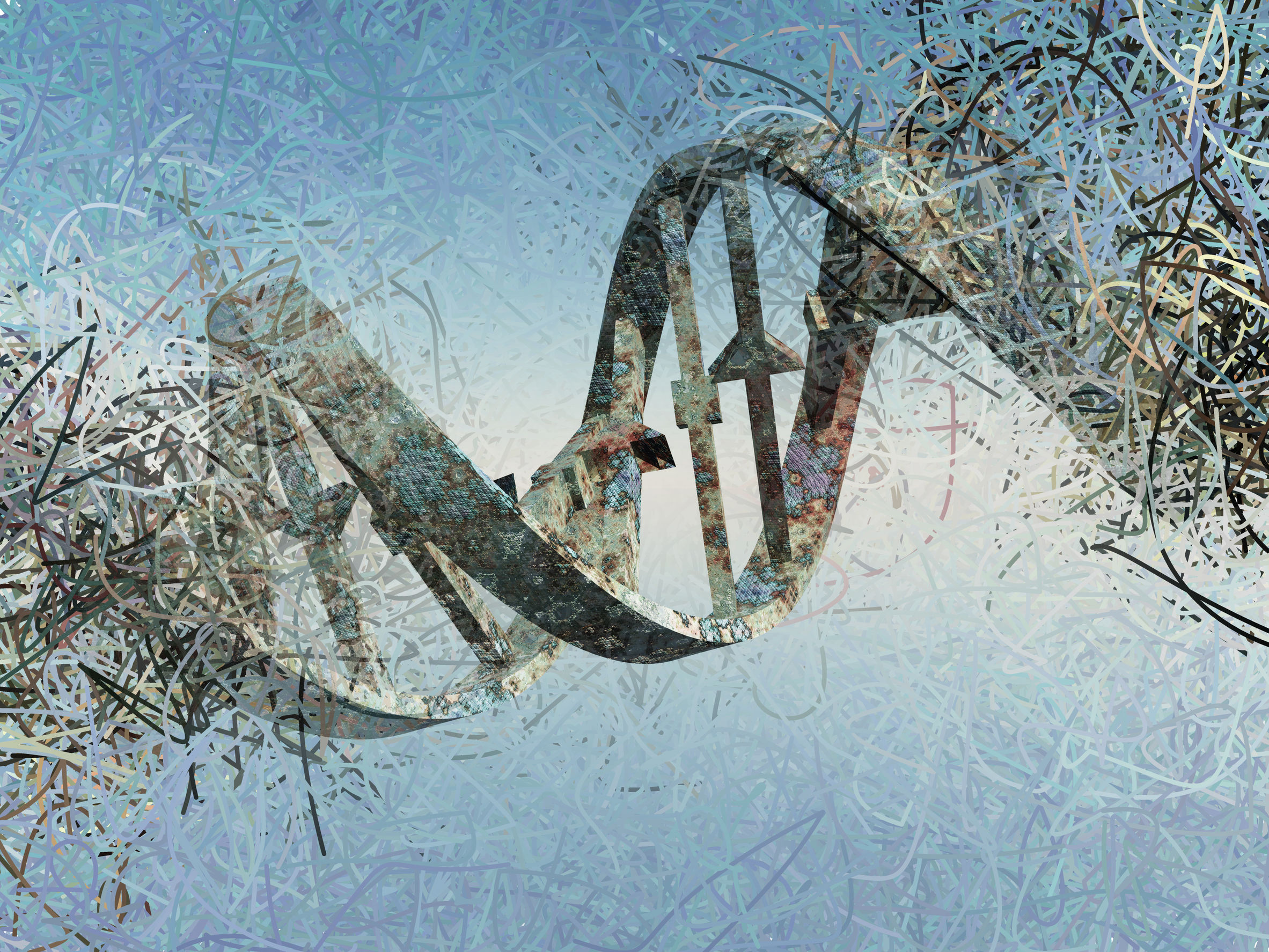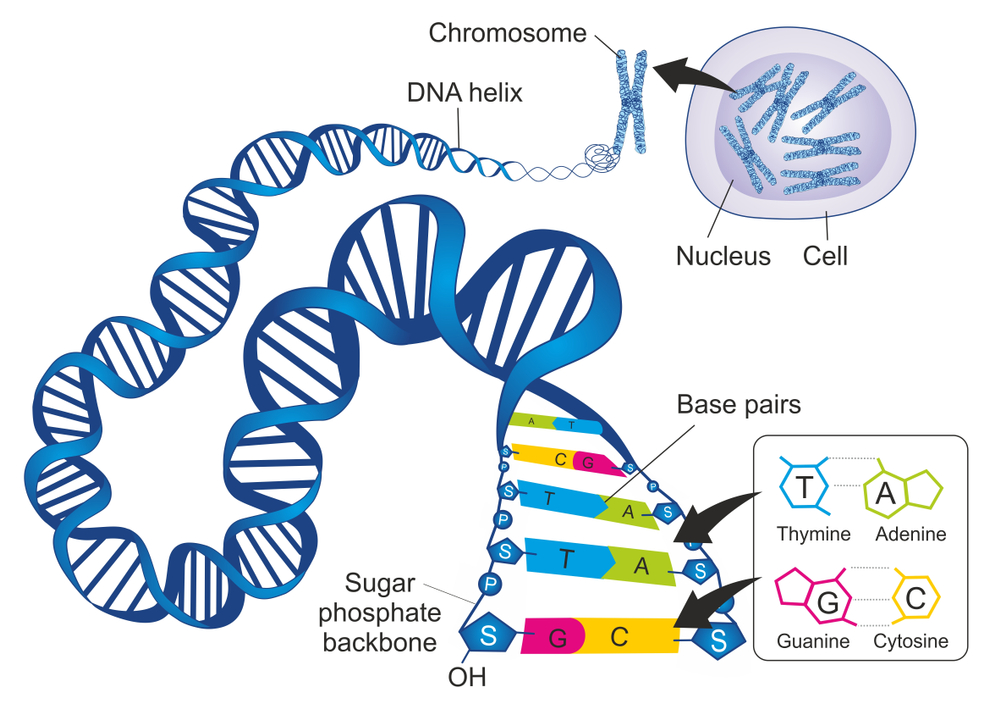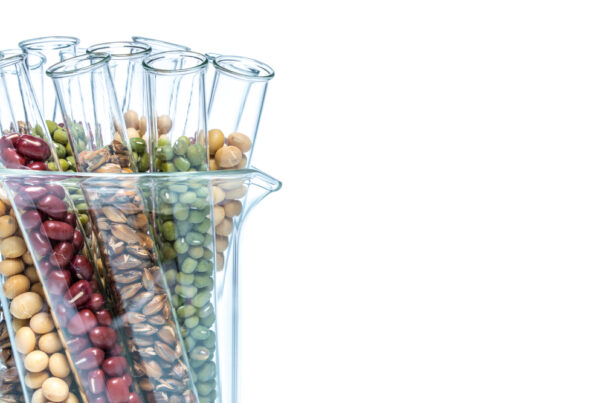DNA (DeoxyriboNucleic Acid)
DNA or deoxyribonucleic acid, as most of you will already know, is the hereditary material in humans and almost all organisms that is present in nearly every cell in our bodies. Most DNA is located in the cell nucleus (nuclear DNA) but some DNA can be found in the mitochondria (mitochondrial DNA). Our DNA contains the genetic information that determines how we look, and also serves as our blueprint for potential weak spots and strengths when it comes to our health. This is determined by the sequence or the order of our DNA material or nucleotides.
These DNA sequences can be changed when errors are copied when DNA becomes damaged over time for various reasons.
Now what would you say if I told you that DNA damage can be reversed?
Well it can!
And guess what? There are ways we can test for this. Both in whether it may be an important issue for you, and also whether your treatment plan is working when the focus is DNA and cellular repair.
One such marker that we look for when assessing cellular and DNA damage due to oxidative stress is the 8-OHdG marker. 8-OHdG is short for 8-Hydroxy-2-deoxyguanosine.
SO, WHAT IS 8-HYDROXY-2-DEOXYGUANOSINE EXACTLY?
8-OHdG is a product of oxidative damage to DNA.
DNA is made up of 4 chemical bases or nucleotides – adenine (A), cytosine (C), thymine (T) and guanine (G). The order, or sequences, of these bases determines the information that will be available for building and maintaining us as human beings. These DNA bases pair up with each other – A with T, and C with G – to form units called base pairs.
8-OHdG is formed in a pro-mutagenic DNA lesion when reactive oxygen species (ROS) or free radicals react with the guanine (G) groups in the DNA. This makes 8-OHdG a great marker to measure for when we are looking for signs of DNA damage caused by oxidative stress caused by all kinds of things, such as exposure to:
- Metals such as mercury, lead, arsenic, etc.
- Phtalates and other plastics
- Benzene found in processed foods and cosmetics, and also other preservatives
- Acetaldehyde from candida overgrowth or excess alcohol use
- Formaldehyde found in new furniture
- Chlorine in drinking water and swimming pools
- Dioxins from paper
- Petroleum
- Many other environmental toxins
- Chronic infections from organisms such as parasites, viruses, bacteria and fungi
- Ammonia as a byproduct of these infections
- Mold
- Quinones
- Poor diet
- Emotional stress
Yes, you read right. Emotional stress can also be responsible for oxidative stress, and damage cells and DNA in the same way that environmental chemicals and toxins do. So, don’t underestimate the impact of chronic exposure to stress as commonly seen in PTSD or Post Traumatic Stress Disorder.
High levels of 8-OHdG has also been found in those with:
- Parkinson’s disease
- Diabetic nephropathy
- Chronic Obstructive Pulmonary Disease (COPD)
- Environmental toxin exposure
- Atherosclerosis
In fact, there seems to be a uniform increase of 8-OHdG within the different stages of Parkinson’s which indicates that measuring 8-OHdG may be a good way for us to monitor progression of this debilitating disorder.
But pretty much anything that has a genotoxic effect will cause an increase in this marker.
And it doesn’t always have to be complicated. Smokers and those who eat an antioxidant deficient diet may also be at risk of having high levels of 8-OHdG, which is why it is important to eat a healthy diet with lots of high antioxidant fruits and vegetables.
You can read more about a diet that would resemble high antioxidant in our FREE ‘The Anti-Inflammatory Diet’ book.
MARKERS USED TO TEST FOR DNA DAMAGE AND OXIDATIVE STRESS
So, I’m going to give you an example of this in action…

This test was performed one year apart for the same client. Notice the 8-OhdG marker on the first sample.
A whopping 20.1!
Now if you are a health practitioner who tests for this marker on a regular basis, you would know that this is a massive number. To put it into perspective, the usual numbers we see for this marker may be 3 or 4 and when it’s high, maybe between 5-8. Considering that this particular client was exposed to large quantities of environmental chemicals when she was young and also mold later in life, it sort of makes sense why this marker would be high. But still, 20.1 is a big number any way you look at it.
But with the right treatment we got this down to 3.6, back into the normal range.
What a great result!
Now I would also like to point out that it didn’t necessarily take us a year to get this great result. This was just the time frame between testing because we had to do things extremely slowly in this case due to hypersensitivity reactions. Unfortunately there is not really any way of telling how long it took, so it could have been 4-6 months, but who knows.
Other ways to measure for DNA damage and oxidative stress also include measuring for lipid peroxides in combination with 8-OHdG such as in the example below…

This test was performed one year apart for the same client. Notice the 8-OhdG marker on the first sample.
A whopping 20.1!
Now if you are a health practitioner who tests for this marker on a regular basis, you would know that this is a massive number. To put it into perspective, the usual numbers we see for this marker may be 3 or 4 and when it’s high, maybe between 5-8. Considering that this particular client was exposed to large quantities of environmental chemicals when she was young and also mold later in life, it sort of makes sense why this marker would be high. But still, 20.1 is a big number any way you look at it.
But with the right treatment we got this down to 3.6, back into the normal range.
What a great result!
Now I would also like to point out that it didn’t necessarily take us a year to get this great result. This was just the time frame between testing because we had to do things extremely slowly in this case due to hypersensitivity reactions. Unfortunately there is not really any way of telling how long it took, so it could have been 4-6 months, but who knows.
Other ways to measure for DNA damage and oxidative stress also include measuring for lipid peroxides in combination with 8-OHdG such as in the example below…
Lipid peroxide is the measurement for fats that become oxidized due to high levels of free radicals or oxidative stress. This can sometimes translate into high blood LDL levels and a risk of atherosclerosis, or other issues such as leaky cell membranes. Remember that your cell membranes are made up of different carbon lengths of fats, so if they become oxidized then your cell membranes become stiff and damaged which may then have a flow-on affect on nutrient absorption and cell-to-cell communication.
THE GOOD NEWS IS…
DNA damage can absolutely be reversed, and it doesn’t have to take years and years, as long as you get the right diagnosis and the right treatment.
AND REVERSING DNA DAMAGE ESSENTIALLY MEANS YOU ARE:
- Reversing the ageing process
- Allowing your cells to be healthier
- Reducing your risk of developing all kinds of chronic diseases
- Reducing your risk of developing cancer
- Gearing yourself up for a healthier body and life
- Improving your chances of heaving healthy babies
And isn’t this what we all want?
REFERENCES:
Urinary 8-OHdG: A marker of oxidative stress to DNA and a risk factor for cancer, atherosclerosis and diabetics
8-hydroxy-2′-deoxyguanosine (8-OHdG): A critical biomarker of oxidative stress and carcinogenesis
Urinary 8-hydroxydeoxyguanosine levels as a biomarker for progression of Parkinson disease








Hi Elizma, thanks for sharing this invaluable information!
You are most welcome Elena.
Doesn’t this just show that the damage that was occurring slowed? It doesn’t seem to show that previous damage has been repaired or reversed.